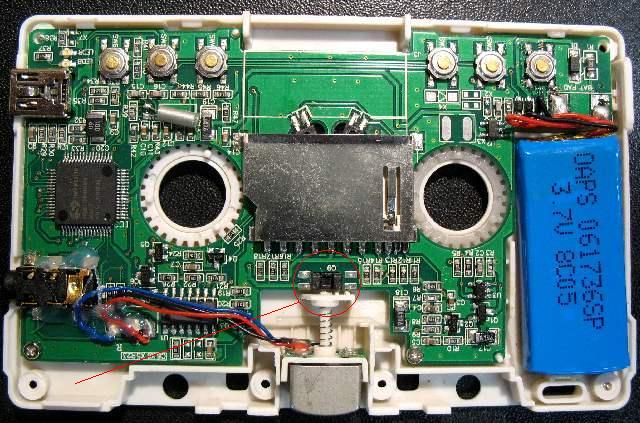The magnetic cassette era is at its end, but it seems my car's radio doesn't know: it happily features a cassette player, and no CD or MP3 player. Well, to tell it all, I could buy a multi-CD player, but it would be absurdely expensive for my model... I guess those people selling CD players for my radio are so in love with them that they don't want to separate for any reason.
Fortunately there are other remedies for this problem: cassette adapters having a small cord and a jack input, or FM modulators to receive MP3 audio via FM radio. It's simply a matter of taste; so I bought on Ebay an MP3 player hosted inside a cassette-shaped case that can be inserted inside the deck player. A clean and clever solution against wire-originated entropy. At first, when I saw one at 40$, I was a little skeptical, but I couldn't resist a 15$ bargain from Hong Kong. After testing it for some weeks, I confirm it works. And, very important, the way an owner intends to use it.

It can host SD/MMC cards up to 2 GB: not leading edge, but still the capacity of 20-30 C90 cassettes! It is equipped with a standard USB connector and a cable to connect it to a PC that "sees" it as a removable USB disk. It has an internal LiPo battery, that is recharged via the same USB cable, using the supplied car cigar lighter or universal voltage mains charger - in other words, you can charge the MP3 Cassette adapter at will in car, at home, or via an USB connector, and share its chargers with any other device that can get power from an USB connector. It has a mechanical power switch, meaning that you can power it off and leave it for days or weeks without killing the battery. Despite this, it will remember the last song played, and start from that where powered off (no shuffle, sorry).
Finally, it can be carried away from the car and used as a standalone MP3 player, if you don't miss too much a display showing songs titles. The supplied headphones sound a bit tinny, but any other can be used thanks to the standard 3.5mm jack.
As to the sound quality in car, altough not the quality of a directly-connected CD player, it is distinctively better than a "real" cassette, especially on high frequencies: no more messing with azimuth alignment with cassettes coming from different recorders, no wow&flutter... And, best of all, no clogging internal mechanism due to unrolled tape!
The only delusion, at first, was that the fast forward-review buttons on the radio didn't work. Yes, the adapter do have internal wheels not only to "fool" the deck into thinking that a real cassette is inserted, but also to determine by its movement when to play and pause music. I was mislead by what I read on Internet, and thought that the same wheel's speed was used to identify FF/REW; so I couldn't resist opening the case and see if I could do something to make it work. After some try, I realized what really was wrong, and that the solution was easier than thought.

Here is a picture of the gadget's inside. As you can see, just under the SD/MMC slot there is a couple of optical sensors detecting wheels movement and its direction. But, on the picture, your attention is drawn on another optical sensor just behind the magnetic head. The head can move back and forth by loading a spring, having on its back a plastic pin that interrupts the optical sensor beam. This is what reaslly tells the adapter when FF/REW is pressed, not the wheel speed! Every normal cassette deck will push the magnetic head towards the tape when playing, but retract it during FF/REW to reduce its wear due to tape flow. A tape deck equipped with music search will retract it less, because the head will remain near the tape to detect the silence between sounds during the fast movement.
So, that was the problem; the solution was very easy: cut a bit of the plastic pin. Actually, I've cut less than 1mm; better too less than too much, as adding lenght later would be much more complicated. Closed the case I've tested it and... bingo! Now I've got FF/REW working! If I enable Music Search I can skip a song at a time, while disabling it I can skip several at once; in both cases, the skipping is way faster that with a real cassette. Mission complete with success.
P.S. You may wonder if the unit must be turned on while charging it by USB. I've done. It turned out that, if the mechanical switch is off, power from USB will go to the battery via a 30KOhm resistor. This means a slow (trickle) charge will occur; if you want to charge it at human speed, you'll need to turn it on.
